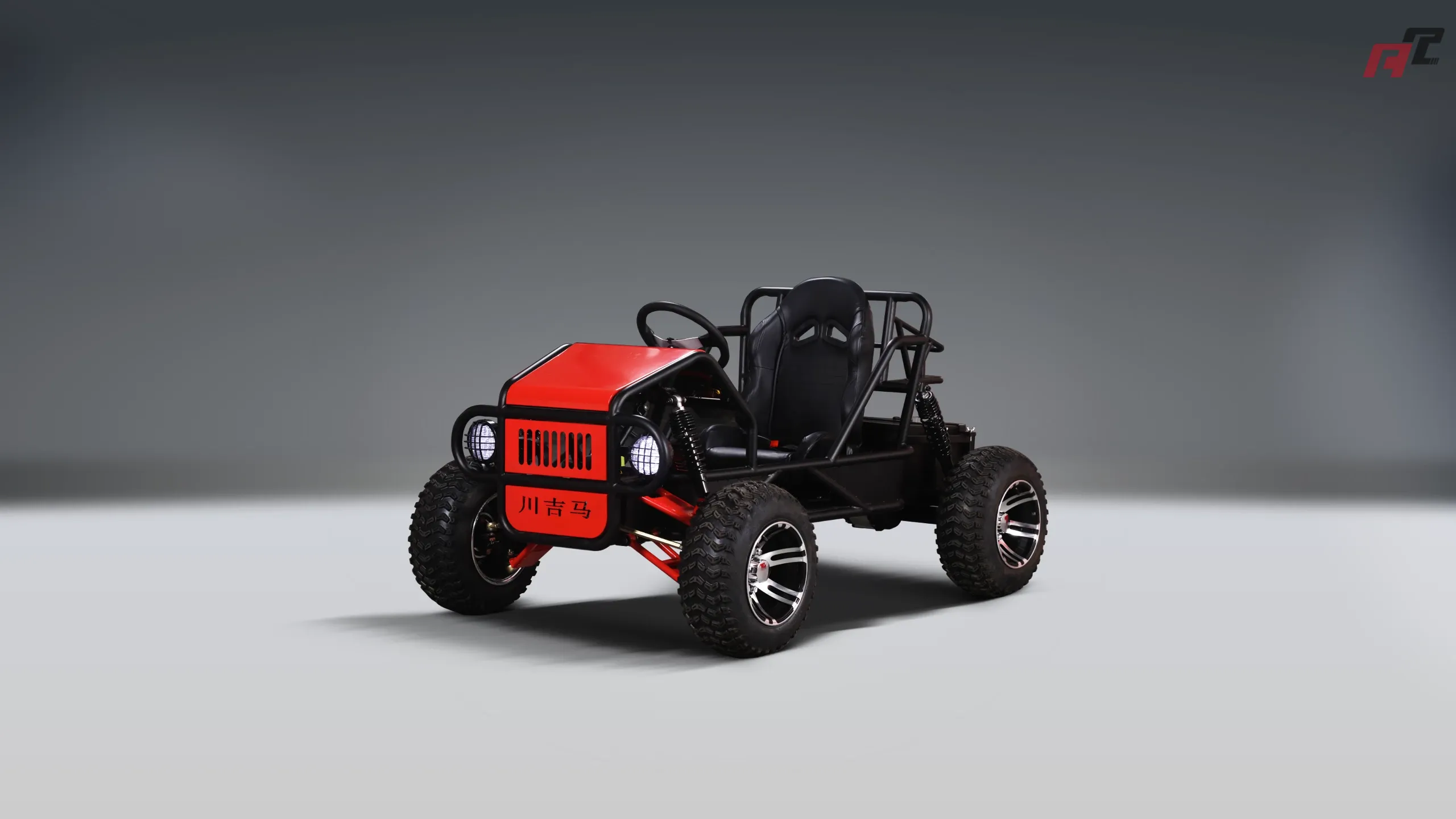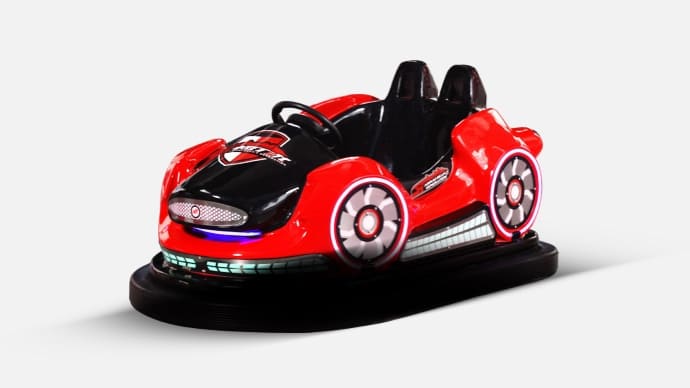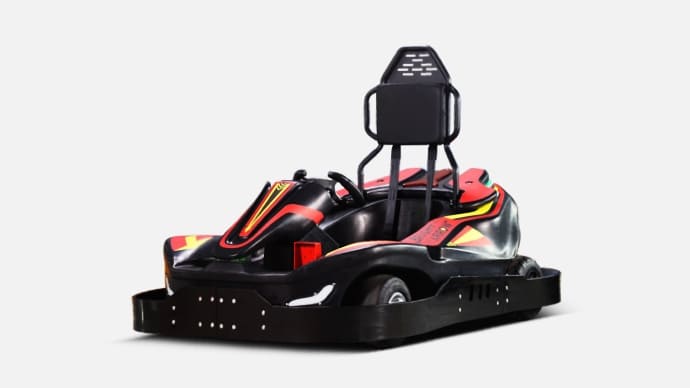Battery Bumper Car vs Gas: Which Is Better for Go-Kart Parks?
- Battery Bumper Car vs Gas: Which Is Better for Go-Kart Parks?
- Quick overview
- Cost and Return on Investment
- Upfront purchase and installation
- Operating Costs
- Energy, fuel and daily running expenses
- Maintenance and Lifespan
- Service intervals and long-term upkeep
- Guest Experience and Safety
- Noise, fumes, and comfort
- Environmental & Regulatory Considerations
- Emissions, permits and local rules
- Venue Design and Operational Flexibility
- Indoor vs outdoor suitability
- Comparative Table: Battery Bumper Car vs Gas
- Side-by-side comparison
- Practical Considerations Before You Buy
- Operational patterns and scaling
- Factors that influence total cost of ownership
- Utilization, energy prices, and battery management
- Why ANCHI Amusement is a strong partner
- Manufacturer expertise and complete venue solutions
- Decision checklist for park owners
- How to choose the right option
- Conclusion: Which is better?
- Summary recommendation
- FAQ
- Common questions from park operators
Battery Bumper Car vs Gas: Which Is Better for Go-Kart Parks?
Quick overview
Operators choosing between Battery Bumper Car attractions and gas-powered vehicles must balance upfront cost, operating expenses, guest experience, safety, environmental impact, and venue design. This article gives a clear, practical comparison to help go-kart park owners, operators, and investors make a data-driven decision.
Cost and Return on Investment
Upfront purchase and installation
Battery-powered bumper cars and electric go-karts typically have higher initial purchase prices than basic gas karts when comparing like-for-like (safety features, build quality). However, total venue setup costs depend on infrastructure: electric lines and charging stations for Battery Bumper Car fleets versus fuel storage and ventilation for gas setups. For indoor venues, electrics often reduce the need for expensive ventilation and exhaust systems.
Operating Costs
Energy, fuel and daily running expenses
Electric vehicles generally have lower per-hour energy costs than internal combustion engines. Electricity prices and utilization patterns vary regionally, but charging an electric amusement vehicle is commonly cheaper than refueling with gasoline per hour of operation. Battery charging schedules and peak electricity rates should be planned to optimize costs.
Maintenance and Lifespan
Service intervals and long-term upkeep
Battery-powered rides have fewer moving parts—no carburetors, oil systems, or complex exhausts—so routine maintenance tends to be simpler and less frequent. Lithium battery packs typically last multiple years under amusement use (commonly 3–5 years depending on charge cycles and management). Gas engines require regular oil and filter changes, more frequent tune-ups, and exhaust system care.
Guest Experience and Safety
Noise, fumes, and comfort
Battery attractions are significantly quieter and produce no tailpipe emissions, improving guest comfort—especially indoors and for family-focused venues. Reduced noise also makes staff communication and audio-based entertainment easier. Both battery and gas vehicles can meet high safety standards; however, electrics avoid risks associated with fuel handling.
Environmental & Regulatory Considerations
Emissions, permits and local rules
Battery-powered attractions have zero on-site tailpipe emissions, which simplifies compliance with indoor air-quality regulations and can be favorable for permits in urban areas. Increasing local restrictions on emissions and noise in many jurisdictions make electric attractions future-proof for parks aiming to expand or operate in regulated zones.
Venue Design and Operational Flexibility
Indoor vs outdoor suitability
Battery bumper cars are ideal for indoor parks due to low emissions and noise. Gas karts may be better suited for outdoor circuits where ventilation is not an issue. Electric systems allow more flexible placement of attractions within a venue, while gas attractions require safety measures for fuel storage and exhaust management.
Comparative Table: Battery Bumper Car vs Gas
Side-by-side comparison
| Factor | Battery Bumper Car (Electric) | Gas-Powered Vehicle |
|---|---|---|
| Upfront cost | Moderate–High (depends on battery tech, safety features) | Low–Moderate for basic models; higher for performance karts |
| Operating cost | Lower energy cost per hour; savings over time | Higher fuel and routine service costs |
| Maintenance | Simpler mechanical upkeep; battery replacement every few years (typ. 3–5 years depending on cycles) | More frequent engine maintenance (oil, filters, carburetor/tune-ups) |
| Refuel/Recharge time | Charging hours (varies by charger); faster with multiple chargers or swappable batteries | Refueling takes minutes |
| Noise | Low—better guest comfort indoors | High—may limit indoor use |
| Emissions | Zero on-site tailpipe emissions | CO2 and other exhaust emissions |
| Indoor suitability | Excellent | Poor unless extensive ventilation provided |
| Staff training & safety | Focus on battery care, charging protocols | Fuel handling and engine troubleshooting |
Practical Considerations Before You Buy
Operational patterns and scaling
Choose Battery Bumper Car fleets if your venue is indoor, family-oriented, or located in areas with strict noise/emission rules. If your park runs long outdoor racing sessions with quick turnarounds and you prioritize minimal downtime between heats, gas karts’ quick refuel times can be attractive. Many modern operators adopt a hybrid approach—electric for family/fun attractions and gas for outdoor racing experiences where desired.
Factors that influence total cost of ownership
Utilization, energy prices, and battery management
Total ownership cost depends on local electricity vs fuel prices, hours of daily operation, charging infrastructure costs, battery management system quality, and resale/repurpose plans for batteries. Good battery management (temperature control, proper charging protocols) significantly extends pack life and reduces replacement expense.
Why ANCHI Amusement is a strong partner
Manufacturer expertise and complete venue solutions
ANCHI Amusement is one of the leading manufacturers of amusement equipment in China. We integrate bumper cars, go-karts, off-road vehicles, R&D, production, sales, and after-sales service. With over 5,000 m² of production space, multiple assembly lines, and a team of 30+ skilled technicians, ANCHI delivers reliable Battery Bumper Car products and turnkey venue solutions—from concept design to execution. We supply a wide range of products including inflatable bumper cars, laser battle bumper cars, drift bumper cars, adult and youth electric karts, and children’s vehicles. Learn more at https://www.anchiamusement.com/.
Decision checklist for park owners
How to choose the right option
Ask these questions before deciding: Is the attraction indoor or outdoor? What are local noise and emissions regulations? How many operational hours per day? Are quick turnarounds between sessions essential? What is your maintenance staffing capability? Do you prefer lower long-term operating costs over lower initial procurement cost? Answering these will clarify whether Battery Bumper Car or gas vehicles suit your business model.
Conclusion: Which is better?
Summary recommendation
For most modern go-kart parks—especially indoor venues and family-focused centers—Battery Bumper Car attractions are the better choice due to lower noise, no on-site emissions, simpler maintenance, and favorable guest experience. Gas-powered vehicles can still be appropriate for specific outdoor racing contexts where quick refueling and certain performance characteristics are prioritized. Many successful operators combine both types strategically.
FAQ
Common questions from park operators
Q: How long do batteries last in amusement vehicles?
A: Typical lithium battery packs in amusement settings last multiple years. Under normal charging and usage regimes, many packs provide reliable service for about 3–5 years, though lifecycle depends on charge cycles, depth of discharge, and thermal management.
Q: Are Battery Bumper Car fleets safe for indoor venues?
A: Yes. Battery bumper cars are commonly used indoors because they produce no tailpipe emissions and have low noise. Proper charging infrastructure and safety protocols for batteries are important.
Q: Do electric attractions cost more to buy?
A: Purchase prices can be higher for higher-end electric units, but lower operating and maintenance costs often deliver a favorable total cost of ownership over the vehicle life.
Q: Can I mix battery and gas vehicles in one park?
A: Yes. Many operators run electric attractions indoors and gas karts outdoors. Mixing requires tailored operations, staffing, and safety procedures.
Q: How can ANCHI help with choosing equipment?
A: ANCHI Amusement offers custom manufacturing, full venue design solutions, and after-sales support to match attraction types to your venue layout, target market, and operational goals. Visit https://www.anchiamusement.com/ or contact ANCHI for a consultation.
Best professional bumper cars game manufacturers and supplier brands
Maintenance Checklist for Battery Bumper Cars in Go-Kart Parks
How to Choose Right best go kart for kids Las Vegas supplier manufacturer and supplier ?
Wholesale drifting electric go kart manufacturer and supplier
About Cooperation Process
How to start working with your company?
You can contact us through our official website or contact information, and our team will be happy to assist you.
What information do I need to provide to start the cooperation process?
You need to provide your company information, product needs, venue information, customization requirements, cooperation intentions and other relevant information.
About Product Choice
How do I determine which product is right for me?
You can choose the product type and specifications that suit you based on your needs, budget, and expected results.
Cyclone RS 2025
Is it safe for children?
The seat is designed for riders above 1.55 m in height, making it suitable for teenagers and adults. A four-point seat belt and hydraulic braking ensure safety.
About Logistics
Does it support express delivery?
Yes, we support express delivery services. You can choose different delivery methods according to your needs, including ordinary express delivery and expedited express delivery.

Cyclone RS 2025 1200W Electric Go-kart for Home Entertainment Centers
The Cyclone RS 2025 is a high-performance electric ride-on car designed for thrill-seekers, entertainment centers, and commercial amusement businesses. Built with a durable ABS body and reinforced metal chassis, it combines strength, safety, and speed for a superior driving experience. With a 1200W mid-mounted motor (peaking at 3600W), advanced control system, and long-lasting 72V20AH LiFePO₄ battery, this ride ensures both powerful performance and reliability.
Whether for amusement parks, game zones, rental businesses, or personal recreational use, the Cyclone RS 2025 delivers unmatched excitement and durability.

Kids Electric Off Roads One-seater ATV
Discover adventure with the ANCHI Kids Electric One-seater ATV, the perfect electric off-road experience for young explorers. Designed for safety and performance, this electric off-road go kart for kids offers unmatched thrills on any terrain. Its durable build and easy-to-use controls ensure a fun and safe ride. Ideal for budding adventurers, this ATV promises endless excitement. Explore the world with confidence with ANCHI’s innovative electric off-road solutions for kids.

Battery Drift Bumper Car With inflatable tyre
The Battery Drift Bumper Car with Inflatable Tire with 650W steel gear motor, and high quality battery wich can becharged outside the car, the bumper car is ideal for amusement parks, family entertainment centers, build quality for safe, long-lasting fun.

Spaceship Laser Battle Bumper Car
Discover the future of fun with the ANCHI Spaceship Laser Battle Bumper Car! Designed for thrill-seekers, this kids bumper car offers an exhilarating laser battle experience. Parents and children alike will enjoy hours of safe, exciting play. Ideal for parties or everyday fun, it combines durability with innovative technology.










